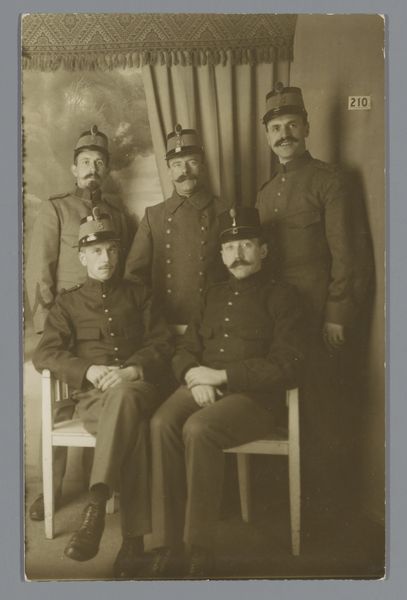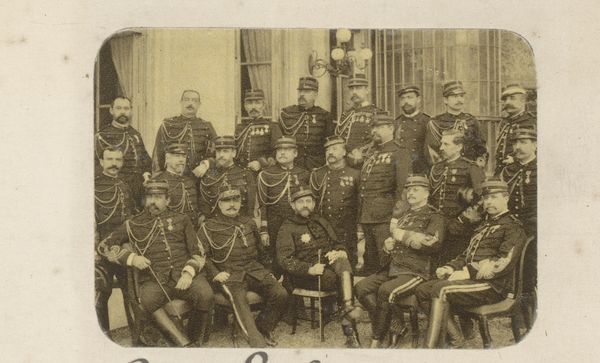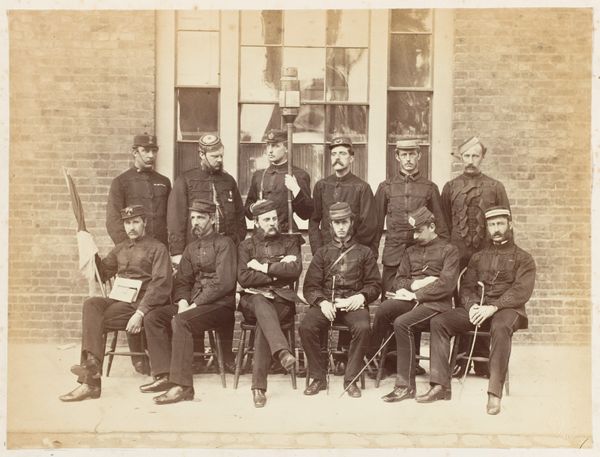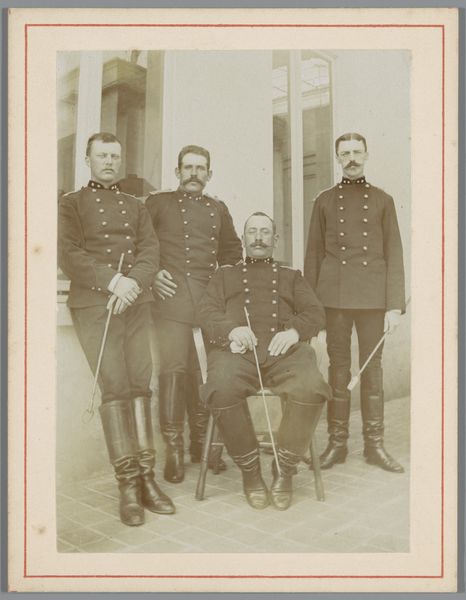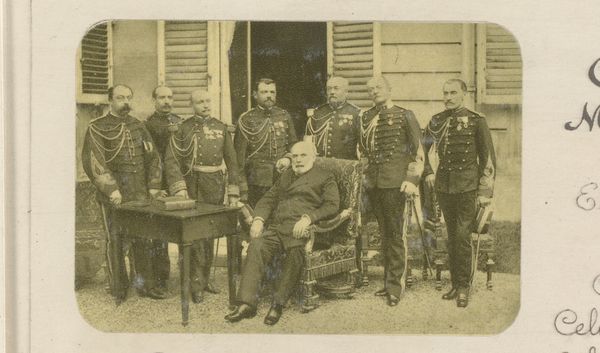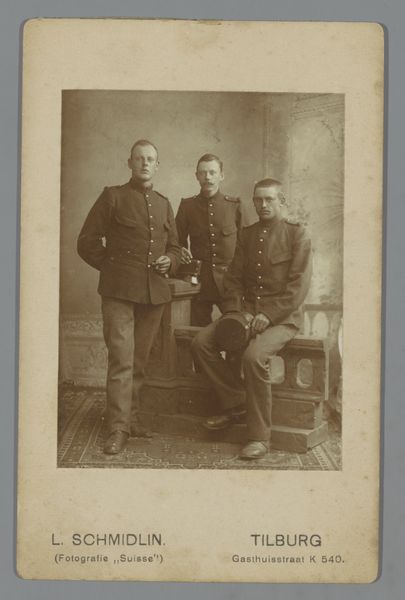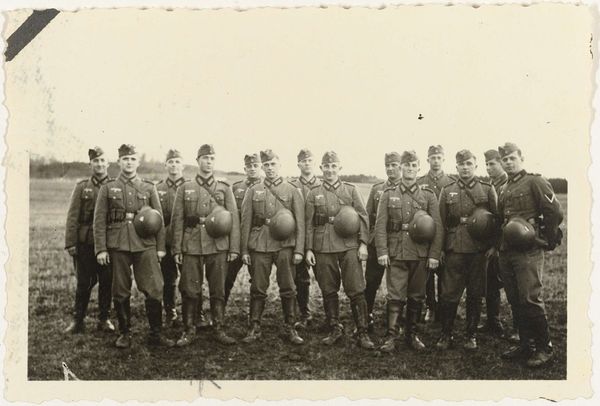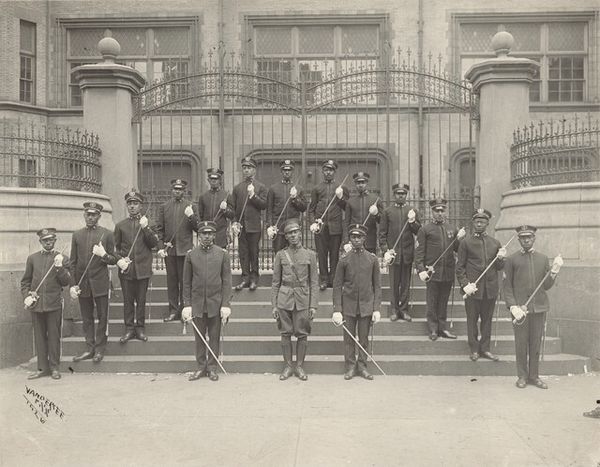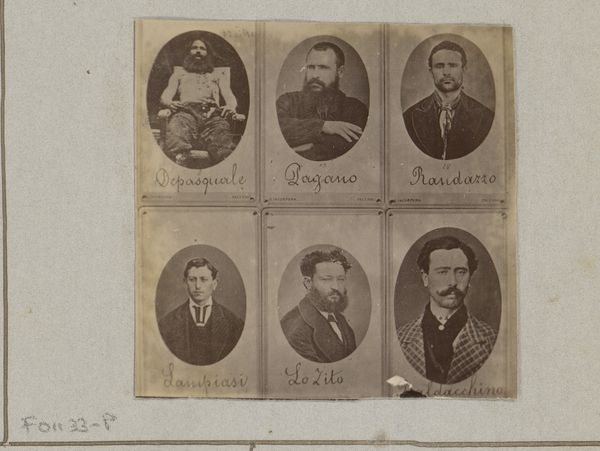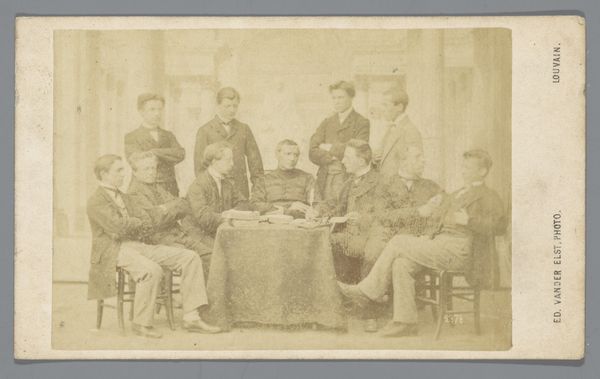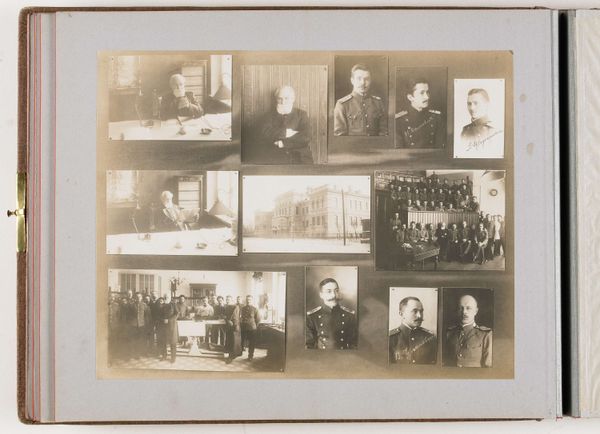
photography, gelatin-silver-print
#
portrait
#
neo-impressionism
#
figuration
#
photography
#
historical photography
#
historical fashion
#
portrait reference
#
group-portraits
#
gelatin-silver-print
#
genre-painting
#
history-painting
#
academic-art
Dimensions: height 100 mm, width 130 mm
Copyright: Rijks Museum: Open Domain
Editor: This is a photograph, a gelatin-silver print from somewhere between 1892 and 1898, by Karel Alexander Enklaar, called "Groepsportret van zeven onbekende militairen"—"Group Portrait of Seven Unknown Soldiers." There's something about the uniformity of the clothing and poses that feels quite stiff. What do you see here? Curator: I see a carefully staged image, meticulously constructed within the confines of the photographic technology of the late 19th century. Let’s think about gelatin-silver printing; a process demanding particular darkroom practices and chemical supplies. Where were these materials sourced? Who was involved in their manufacture and distribution? The relative accessibility of photography meant it democratized portraiture in new ways. Editor: So, beyond just being a record of these soldiers, the photo itself represents larger industrial and social shifts? Curator: Precisely! Consider the very labor involved. The soldiers' uniforms themselves speak to a textile industry, perhaps exploiting colonial resources for raw materials. And the fact that they are "unknown" soldiers becomes quite important. The photograph operates not simply as a representation of individual sitters but indexes broader questions of class, industrial manufacturing and even national identity. Photography challenges older systems that favored painted representations of nobility by granting access of images and social records. The cost of photography becomes key to interpreting how people lived, how art gets made, and by whom. Editor: That's fascinating; I never would have considered the uniforms or the printing process as holding so much meaning. I tend to focus on the artistic and historical aspects of artworks. Curator: The materials are part of that artistic creation. We should consider that by paying closer attention to them, it transforms how we understand and value historical photography and the military complex it indirectly serves. Editor: I'll certainly remember that, moving forward! It changes my understanding of not only this piece but also art in general.
Comments
No comments
Be the first to comment and join the conversation on the ultimate creative platform.

